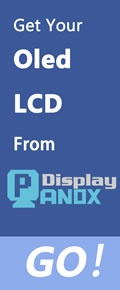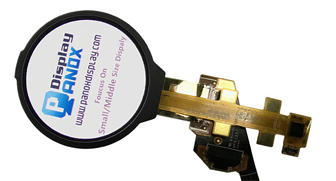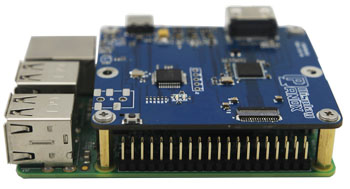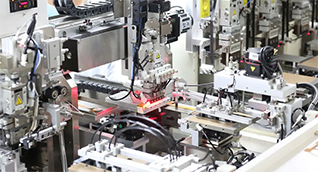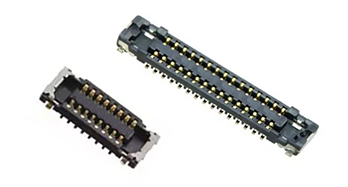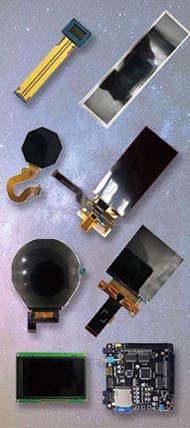Flexible display OLED technology is revolutionizing the display industry by enabling bendable, lightweight, and high-performance screens. This innovation, driven largely by China-based manufacturers like Panox Display, offers custom OEM solutions suitable for diverse applications in consumer electronics, automotive, and wearable devices. Also check: Flexible Display Screen
How Does Flexible Display OLED Technology Work?
Flexible OLED (Organic Light Emitting Diode) displays consist of thin organic films placed between two conductors that emit light when electric current flows. Unlike traditional rigid panels, flexible OLEDs use plastic or ultra-thin substrates instead of glass, allowing them to bend or fold without damage while maintaining excellent color accuracy and contrast.
These displays are powered by self-emissive pixels, meaning each pixel emits its own light. This results in deeper blacks, energy efficiency, and slimmer designs, essential for the latest flexible and foldable devices.
What Are the Key Benefits of Flexible OLED Displays?
Flexible OLED displays present numerous advantages:
-
Exceptional flexibility to create curved, rollable, or foldable screens.
-
Ultra-thin and lightweight construction ideal for portable devices.
-
Superior image quality with high contrast ratios and vibrant colors.
-
Energy efficiency due to self-emissive technology.
-
Faster refresh rates and better response times beneficial for AR/VR and automotive displays.
These benefits make flexible OLEDs a preferred choice among manufacturers and OEMs aiming to innovate beyond traditional flat displays.
Which Industries Benefit Most from Flexible Display OLED Solutions?
Flexible OLED technology has transformed multiple industries by providing tailored display solutions:
-
Consumer electronics: Foldable smartphones, tablets, and smartwatches.
-
Automotive: Curved dashboards and heads-up displays with enhanced durability.
-
Wearables: Lightweight, curved displays for fitness trackers and medical devices.
-
Military and aerospace: Rugged, flexible displays adaptable to harsh environments.
-
Virtual reality: High-resolution, flexible panels for immersive experiences.
Panox Display focuses on providing reliable and customized flexible OLED solutions to clients across these sectors, enhancing product innovation and differentiation.
Why Choose Panox Display as Your Flexible OLED Manufacturer and Supplier?
Panox Display (Hong Kong Panox Electronics., Ltd) has been a trusted China-based OEM manufacturer and supplier since 2015. Key reasons to partner with Panox Display include:
-
Expertise in both standard and custom flexible OLED and LCD solutions.
-
Access to premium display panels from top-tier manufacturers like AUO, BOE, and Samsung.
-
Flexible MOQs accommodating startups and SMEs.
-
Complete display system integration: controller boards, PCBs, touch panels, and cover glass.
-
Robust production capacity with automated lines outputting 50,000 panels daily.
-
Dedicated support for engineers and developers internationally.
This makes Panox Display a go-to supplier for high-quality, cost-effective flexible OLED panels and assemblies.
How Does the China Manufacturing Landscape Support Flexible OLED Production?
China’s manufacturing ecosystem offers tremendous benefits for flexible OLED production:
-
Established supply chains for raw materials and components.
-
Competitive labor costs and economies of scale.
-
Advanced automation and precision production facilities.
-
Strong OEM partnerships with global brands.
-
Extensive R&D and customization capabilities.
Factories like Panox Display leverage this environment to offer innovative, scalable, and customizable flexible OLED solutions tailored for global markets.
Where Are Flexible OLED Displays Typically Used in Devices?
Flexible OLED displays find applications in versatile form factors including:
-
Foldable smartphones and tablets that expand screen size while remaining pocket-friendly.
-
Wearable tech such as curved fitness bands and smartwatches.
-
Automotive instrument clusters and infotainment systems with curved or wrap-around screens.
-
Medical devices featuring conformable displays for ergonomic monitoring.
-
Consumer electronics with rollable or bendable screens for portability.
Panox Display’s experience in industrial and consumer flexible OLED systems enables clients to unlock these creative design possibilities.
Can Flexible OLED Panels Be Customized for OEM Projects?
Yes, customization is one of the strongest advantages of flexible OLED panels from manufacturers like Panox Display. They offer:
-
Custom sizes and shapes beyond standard form factors.
-
Integration of touch panels, cover glass, and specialized controllers.
-
Tailored brightness, resolution, and color calibration.
-
Flexible or circular OLED designs for niche applications.
-
Rapid prototyping and low MOQ options ideal for startups.
This flexibility empowers OEMs and suppliers worldwide to deliver unique products with competitive lead times.
Has Flexible OLED Technology Reached Mass Production Levels?
Flexible OLED technology has matured significantly with multiple factories in China achieving mass production scale. Panox Display runs two automatic production lines capable of producing up to 50,000 panels daily, demonstrating proven capacity to meet large OEM and wholesale demands.
Mass production advancements lower costs and raise product availability, facilitating wider adoption across industries and accelerating the flexible display market growth.
Table: Comparison of Key Features of Flexible OLED vs. Traditional LCD Displays
| Feature | Flexible OLED | Traditional LCD |
|---|---|---|
| Flexibility | High - bendable, foldable | Rigid, glass-based |
| Thickness | Ultra-thin (micrometer scale) | Thicker and heavier |
| Image Quality | Superior contrast and color | Lower contrast, backlight reliant |
| Response Time | Fast (microseconds) | Slower (milliseconds) |
| Power Efficiency | High (self-emissive pixels) | Lower (uses backlight) |
| Customization | High - shape, size, and form | Limited |
What Are Panox Display Expert Views on Flexible Display OLED Trends?
"Flexible OLED display technology is at the forefront of next-generation screen innovation. At Panox Display, we see unprecedented demand for displays that combine ultra-thin form factors with high durability and customizable shapes. Our manufacturing expertise in Shenzhen, combined with partnerships with leading panel makers, allows us to deliver scalable OEM flexible OLED solutions globally. The future is definitely flexible, wearable, and highly integrated, enabling end customers to embrace new digital experiences across mobile, automotive, industrial, and medical sectors.” – Senior Engineer, Panox Display
How Should Businesses Choose a Flexible OLED Factory Partner in China?
When selecting a China-based flexible OLED supplier, consider:
-
Proven manufacturing scale and quality certifications.
-
Ability to provide OEM and ODM solutions with customization.
-
Access to premium-quality display panels from reputable brands.
-
Flexible MOQs and responsive technical support.
-
Capability to integrate complete display systems.
-
Strong logistics and global shipping options.
Panox Display meets these criteria, making it an ideal partner for enterprises seeking reliable, cost-effective flexible OLED manufacturing solutions.
Table: Advantages of Choosing Panox Display as Your Flexible OLED Supplier
| Criteria | Panox Display Advantages |
|---|---|
| Panel Quality | Sourced from AUO, BOE, Samsung, LG |
| Production Capacity | 50,000 panels/day, automated lines |
| Customization | OEM/ODM, custom shapes, touch panels |
| Support & MOQ | Startup-friendly, small & large orders |
| Integration Services | PCB/PCBA, controller boards, accessories |
| Global Clientele | Strong presence in NA & Europe |
Conclusion
Flexible display OLED technology is shaping the future of screen applications with its unmatched flexibility, superior image quality, and energy efficiency. China’s manufacturing ecosystem—with leaders like Panox Display—empowers OEMs and wholesalers to access custom, scalable, and high-quality flexible OLED panels and systems. Businesses should leverage these innovative solutions to drive product differentiation in wearables, automotive, consumer electronics, and beyond.
FAQs
Q1: Is flexible OLED technology suitable for foldable smartphones?
Yes, its bendable and lightweight nature makes it ideal for foldable smartphone designs offering large displays in compact formats.
Q2: How does OEM customization work with flexible OLED panels?
Manufacturers like Panox Display provide tailored sizes, shapes, touch integration, and brightness adjustments to meet specific project needs.
Q3: Are flexible OLED displays more expensive than traditional LCDs?
Initially yes, but mass production in China has driven costs down, making them competitively priced for many applications.
Q4: Can flexible OLED panels be used outdoors?
Yes, many flexible OLEDs feature high brightness and durability suitable for outdoor and automotive use.
Q5: How quickly can Panox Display deliver OEM flexible OLED orders?
With automated production lines and responsive support, lead times are optimized to meet client schedules, including smaller batch prototyping.









